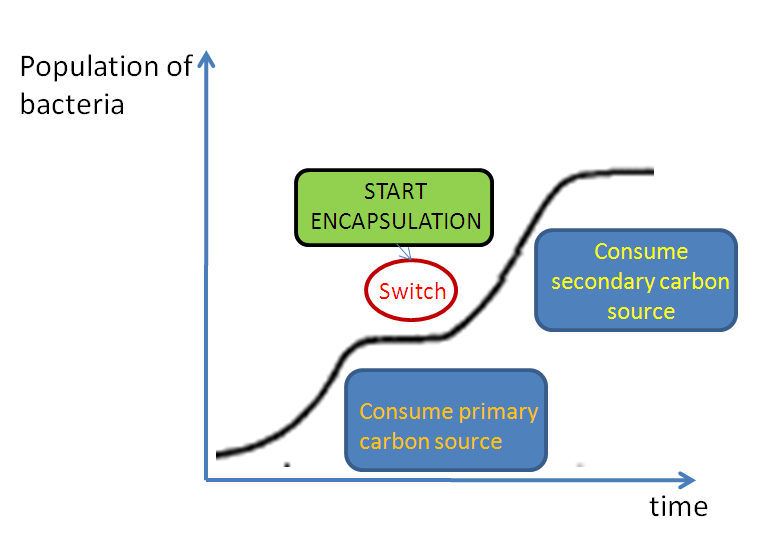Team:Imperial College London/Drylab
From 2009.igem.org
(→80pxDry Lab Hub) |
(→Goal of the models) |
||
| Line 13: | Line 13: | ||
Starting the encapsulation process is related to diauxic growth of bacteria under the presence of two carbon sources. 2 models from literature have been discussed and implemented in this section. More information about each can be found in the extra tabs. After analysis of the models, we picked one of them as the best representation for our data. The sections below will provide a summary about each model, and at the end, discuss which one was picked and why. The diauxic growth phenomenon is tricky to understand, and the models we have chosen illustrate different approaches that groups have taken to explain what happens when bacteria switch to feeding from a primary carbon source to a secondary carbon source. | Starting the encapsulation process is related to diauxic growth of bacteria under the presence of two carbon sources. 2 models from literature have been discussed and implemented in this section. More information about each can be found in the extra tabs. After analysis of the models, we picked one of them as the best representation for our data. The sections below will provide a summary about each model, and at the end, discuss which one was picked and why. The diauxic growth phenomenon is tricky to understand, and the models we have chosen illustrate different approaches that groups have taken to explain what happens when bacteria switch to feeding from a primary carbon source to a secondary carbon source. | ||
| - | ===Goal of the models=== | + | ====Goal of the models==== |
*Provide understanding of the diauxic growth phenomenon | *Provide understanding of the diauxic growth phenomenon | ||
*Find out the time taken to consume glucose in the medium to characterize the CRP promoter. | *Find out the time taken to consume glucose in the medium to characterize the CRP promoter. | ||
Revision as of 12:32, 17 October 2009

 Dry Lab Hub
Dry Lab Hub
Welcome to the Dry Lab!
The goal of the Dry Lab has been to support the Wet Lab by answering questions of interest. Conclusions from the models aim to provide the team with a functional understanding of the system as well as design considerations that should be addressed in the genetic constructs.
In the Dry Lab, we have implemented several models, explaining the behaviour of different parts of the system. This section will use provide a summary of the models. The conclusions drawn can also be found here.
Modelling in this project has been important in defining the "Engineering constraints" of the project, and in particular, we have focused in quantifiying the temporal control aspects of our system. This page provides an overview of the models we have implemented.
Autoinduction
Starting the encapsulation process is related to diauxic growth of bacteria under the presence of two carbon sources. 2 models from literature have been discussed and implemented in this section. More information about each can be found in the extra tabs. After analysis of the models, we picked one of them as the best representation for our data. The sections below will provide a summary about each model, and at the end, discuss which one was picked and why. The diauxic growth phenomenon is tricky to understand, and the models we have chosen illustrate different approaches that groups have taken to explain what happens when bacteria switch to feeding from a primary carbon source to a secondary carbon source.
Goal of the models
- Provide understanding of the diauxic growth phenomenon
- Find out the time taken to consume glucose in the medium to characterize the CRP promoter.


Click on the links to find out more!




 "
"




